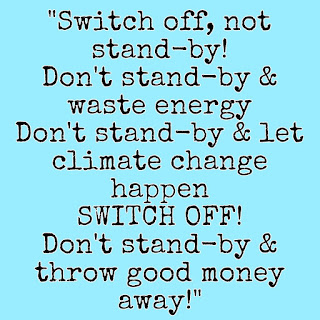Condensation, Damp, Mould Help!
Does your home a problem with condensation?
Measure Moisture In The Air
Consider buying a Hygrometer that measures level of humidity in your room/home. This way you can assess the level of interaction required by yourself to combat it.
Moisture In The Home
Our property needs to breath too! Allowing for good ventilation and air movement regularly, helps to prevent condensation.
Condensation forms when warm moist air lands on cold surfaces like internal walls or Windows, if not managed this can lead to condensation damp.
To combat moisture in the air:
- Produce less moisture
- Dry laundry outdoor or with good ventilation
- Let fresh air in & moist air out
- Extractor fans use!
- Trickle vents use!
- Draft proofing
- Insulation
- Heat unused rooms from time to time
- If you see it forming on Windows either open them ajar, & if too cold to do this then wipe away excess moisture
- Ensure large kitchen appliances have adequate ventilation, especially since fires in the home can be caused by appliances over heating
- Some plants like Spider Plants are known to help reduce humidity
Trickle Vents
Do your uPVC Windows have trickle vents on them?
Most now adays do have them to allow a small amount of air through to ventilate & help to prevent condensation, mould, bacteria and damp.
New regulations were introduced in 15th June 2022 making it a legal requirement for windows in England to be equipped with trickle vents.
I have read online that it can be easy to add trickle vents to uPVC windows, however I've never tried this!
Apparently with a special drill piece designed for uPVC you can drill small holes?
(*Check with landlord or home owner*)
Bathrooms
Most homes have an extractor fan in their bathrooms, often these come on with the pull light switch & stay on a while after the light is switched off, to prevent moisture build up.
Some modern extractor fans work via an in-built sensor, and work automatically when they sense too much moisture in the air.
Check the extractor fan is connected correctly & fully working.
Hot Baths & Showers
Afterwards wipe down excess moisture from glass shower doors like with a squidgee type window cleaner.
Also wipe away other obvious signs of moisture in your bathroom.
If you can stand it open the bathroom window ajar before getting in the shower.
After baths & showers be sure to close bathroom door & turn extractor fan on & leave window open until the condensation has gone, else this moisture moves from the bathroom into your entire home.
Try to take cooler & quicker baths & showers.
Insulate around bath tubs this helps keep baths warmer for longer.
Toilet Seat Down!
Never argue about the toilet seat being left up again!
Leaving the toilet seat up means when the toilet is flushed small droplets spray up & out, landing all around the toilet seat & the surrounding area, this extra moisture can easily lead to the spread of bacteria. If everyone always put the seat down, then everyone has to lift the seat up & afterwards put the seat down, no one is a loser & everyone does exactly the same job, no arguments & silly squabbles. After all once you understand how all the yuck in the toilet bowl sprays out upon a flush, then you would have to be a very dirty person to even consider leaving the toilet seat up.
If problems persist around the toilet cistern it is possible to insulate the cistern.
Kitchens & Cooking Creates Steam
Cooking
Similarly when cooking ventilate kitchen with extractor fan or with window a jar.
Some cooking methods create a lot more steam than others.
By adjusting your cooking methods slightly it's possible to reduce the level of steam produced. Like when boiling veggies by bringing them to the boil then covering completely & simmering on low, & you might even be able to switch them off will reduce steam production. I am now adding a sheet of foil under my sauce pan lids to reduce the amount of energy required to cook things. However I am usually present the entire time I am cooking things like this.
When cooking pull interior kitchen door too & turn on the extractor fan or open a window ajar, this prevents moisture entering the rest of the home.
Kitchen Appliances
Do large kitchen appliances like washing machines, tumble dryers & dish washers have enough ventilation and space around them. Some machine cycles are long & can kick out a lot of heat.
Even fridge freezers need an adequate amount of space for air movement around them, this enables them to work more efficiently.
Plumbing
Keep an eye out for any pipe leaks & fix them.
Consider insulating water pipes with lagging.
Attic
Does your attic have adequate ventilation? Over the years it is possible that vents may become blocked with mildew and if this happens your attic space will be left to sweat with condensation. This issue could quickly become serious especially if your roof is constructed with a wooden frame. This issue can also lead to the wet condensation leaking down into other areas of the home through gaps and cracks.
Loft Insulation
Loft insulation is a great way to prevent heat loss in the home, however a certain amount of air ventilation must be allowed for & vents kept clear in the loft.
Poorly laid loft insulation may be a contributing factor towards the build up of damp in your property.
Guttering
If condensation problems persist consider is it worth checking gutters are clear?
Windows & Doors
Cills and lintels can be a source of damp if water leaks through gaps and cracks.
Cleaning Away Condensation Build Ups
Areas of the home prone to condensation and mould are best cleaned regularly, to help prevent build up. Black mould will continue to spread.
Other Considerations
External brick walls can be sprayed with water sealants.
Wall cavity issues can cause damp.
Some forms of rising damp will slowly leave a dark mark in walls, like shadows that will slowly over time work there way up, as the damp spreads.
Some damp and condensation issues are caused by deep rooted issues within the property and are best not to be ignored. Whilst others can be improved quickly by putting toilet seats down, not leaving kitchen sink full of water, using extractor fans, opening bathroom window after use with extractor on & squidgy down shower, squidgy and dry windows every day during winter months. If you reduce the wet moisture when you see it has settled on to Windows etc, then hopefully you will remove a little of what could easily become moisture in the air again.
Warm your home through regularly.
🙂




Comments
Post a Comment